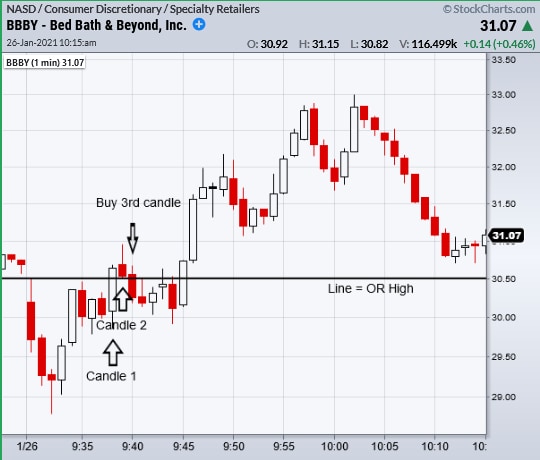Tactics are all-important when considering short-term trades, especially when dealing with components as volatile as GameStop’s [GME] share price. Mish Schneider has revealed her personal tactics for dealing with such stocks.
Short squeezes and high-risk trades have been all the rage in the media recently, with stocks like GameStop’s share price and Bed Bath & Beyond’s [BBBY] share price flying up to unthinkable daily prices.
But how could you tackle a short squeeze if you think a company is being targeted by a large amount of buyers?
First, let’s makes sure we understand what a short squeeze is and why they happen.
A short squeeze happens when a gap up or abrupt move higher takes place in a security with high short interest, forcing traders that had previously taken a negative position to buy back their shares for a loss, thus creating a large amount of upward pressure as panic buying takes place.
The large upward price move forces even more short sellers to liquidate their positions resulting in a short squeeze.
Ideally, the stock would also be a low float stock, which means the security has a low number of shares available to purchase.
This can increase the potential squeeze as buyers fight to buy a limited number of shares.
So how could a trader react to a potential squeeze?
Ideally, they would already be in the trade and be taking profits as it runs higher, but if not and they still wish to participate, they could make a very quick or active trade using a rule developed to take advantage of short-term momentum.
The 5-minute opening range

The opening range was developed in the days of trading on the floor of the commodities exchange.
Traders (Keith Schneider, Geoff Bysshe and I all excelled at this) would use this simple method to decide whether to enter a trade or let it pass.
It works by taking the first five minutes of the stock’s opening price, then buying the stock or security if it breaks the high of the five-minute range for two consecutive minutes.
You can see this done in the chart above.
This gives traders a clear method to watch if momentum is breaking to the upside or the downside. They can simply stop themselves out with a small loss if the share price breaks the 5-minute opening range low.
While nothing is perfect, this method could remove traders from some nasty morning selloffs, while still participating in some great movers like Bed Bath & Beyond on Tuesday. It may also help traders avoid getting hurt by things like the fake out in Beyond Meat [BYND].
This article was originally published on www.marketguage.com. With over 100 years of combined market experience, MarketGauge's experts provide strategic information to help you achieve your investing goals.
Disclaimer Past performance is not a reliable indicator of future results.
CMC Markets is an execution-only service provider. The material (whether or not it states any opinions) is for general information purposes only, and does not take into account your personal circumstances or objectives. Nothing in this material is (or should be considered to be) financial, investment or other advice on which reliance should be placed. No opinion given in the material constitutes a recommendation by CMC Markets or the author that any particular investment, security, transaction or investment strategy is suitable for any specific person.
The material has not been prepared in accordance with legal requirements designed to promote the independence of investment research. Although we are not specifically prevented from dealing before providing this material, we do not seek to take advantage of the material prior to its dissemination.
CMC Markets does not endorse or offer opinion on the trading strategies used by the author. Their trading strategies do not guarantee any return and CMC Markets shall not be held responsible for any loss that you may incur, either directly or indirectly, arising from any investment based on any information contained herein.
*Tax treatment depends on individual circumstances and can change or may differ in a jurisdiction other than the UK.
Continue reading for FREE
- Includes free newsletter updates, unsubscribe anytime. Privacy policy






